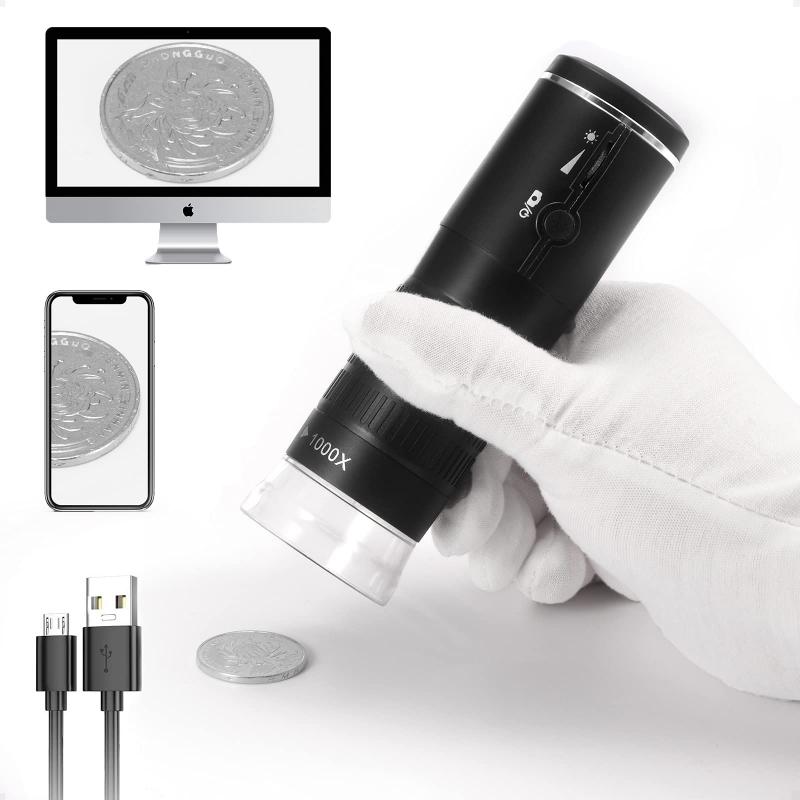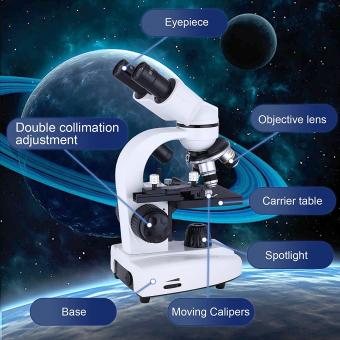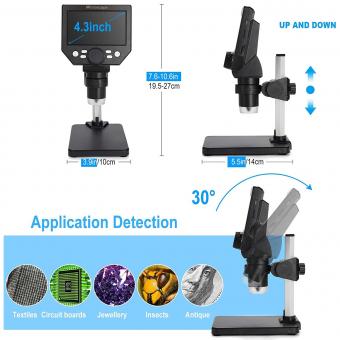Can Dna Be Seen Under A Microscope ?
No, DNA cannot be seen under a regular light microscope. DNA molecules are extremely small, typically measuring only a few nanometers in width. This is far below the resolution limit of a light microscope, which is around 200-300 nanometers. To visualize DNA, specialized techniques such as fluorescence microscopy or electron microscopy are used.
1、 DNA Structure and Composition
Yes, DNA can be seen under a microscope. However, it is important to note that DNA is an extremely small molecule, and its visualization requires the use of advanced techniques and staining methods.
In the early days of DNA research, scientists used electron microscopes to observe DNA molecules. These microscopes use a beam of electrons instead of light to magnify the sample, allowing for higher resolution imaging. With the help of electron microscopy, scientists were able to visualize the double helix structure of DNA for the first time.
More recently, advancements in fluorescence microscopy have allowed for even better visualization of DNA. Fluorescent dyes can be used to stain DNA molecules, making them visible under a fluorescence microscope. This technique has been particularly useful in studying the dynamics of DNA within cells, as it allows scientists to track the movement and organization of DNA in real-time.
It is worth mentioning that while DNA can be seen under a microscope, the visualization of individual DNA molecules is still challenging due to their small size. Therefore, most studies focus on visualizing DNA within cells or using techniques that amplify the DNA signal, such as polymerase chain reaction (PCR) or DNA sequencing.
In conclusion, DNA can be seen under a microscope using advanced techniques such as electron microscopy or fluorescence microscopy. These methods have greatly contributed to our understanding of DNA structure and composition. However, it is important to note that visualizing individual DNA molecules still presents technical challenges, and most studies focus on visualizing DNA within cells or using amplification techniques.

2、 DNA Replication and Repair
Yes, DNA can be seen under a microscope. However, it is important to note that DNA is an extremely small molecule, and its visualization requires specialized techniques and equipment.
One commonly used method to visualize DNA under a microscope is fluorescence microscopy. In this technique, DNA is stained with a fluorescent dye that binds specifically to the DNA molecule. When the sample is illuminated with a specific wavelength of light, the dye emits fluorescence, allowing the DNA to be visualized as bright spots or lines under the microscope.
Another technique used to visualize DNA is electron microscopy. In electron microscopy, a beam of electrons is used instead of light to illuminate the sample. This allows for higher resolution imaging, enabling scientists to see the fine details of the DNA molecule.
It is worth mentioning that recent advancements in microscopy techniques have greatly improved our ability to visualize DNA. For example, super-resolution microscopy techniques, such as stimulated emission depletion (STED) microscopy and single-molecule localization microscopy (SMLM), have pushed the limits of resolution, allowing scientists to observe DNA at the nanoscale level.
Furthermore, the development of DNA sequencing technologies has revolutionized our understanding of DNA replication and repair. Next-generation sequencing techniques, such as Illumina sequencing, enable the rapid and accurate sequencing of DNA, providing valuable insights into the mechanisms of DNA replication and repair.
In conclusion, while DNA is not visible to the naked eye, it can be seen under a microscope using specialized techniques such as fluorescence microscopy and electron microscopy. Recent advancements in microscopy and DNA sequencing technologies have further enhanced our ability to visualize and study DNA replication and repair processes.

3、 DNA Packaging and Chromatin Structure
Yes, DNA can be seen under a microscope, but it requires specific techniques and staining methods to visualize it effectively. DNA is a very small molecule, with a diameter of about 2 nanometers, which makes it difficult to observe directly using a light microscope. However, with the advent of advanced microscopy techniques, scientists have been able to visualize DNA and study its packaging and chromatin structure.
One commonly used technique to visualize DNA is fluorescence microscopy. In this method, DNA is stained with fluorescent dyes that bind specifically to the DNA molecule. The stained DNA can then be visualized using a fluorescence microscope, which detects the emitted light from the dye. This technique allows researchers to observe the location and distribution of DNA within cells and tissues.
Another technique used to study DNA packaging and chromatin structure is electron microscopy. Electron microscopy uses a beam of electrons instead of light to visualize samples. By preparing samples in a way that preserves the structure of DNA, scientists can obtain high-resolution images of DNA molecules. This technique has provided valuable insights into the three-dimensional organization of DNA within the nucleus and the packaging of DNA into chromatin.
Recent advancements in super-resolution microscopy have further improved our ability to visualize DNA. Super-resolution microscopy techniques, such as structured illumination microscopy (SIM) and stochastic optical reconstruction microscopy (STORM), can achieve resolutions beyond the diffraction limit of light, allowing for the visualization of DNA at the nanoscale level.
In conclusion, while DNA is not directly visible under a conventional light microscope, advanced microscopy techniques such as fluorescence microscopy, electron microscopy, and super-resolution microscopy have enabled scientists to visualize and study DNA packaging and chromatin structure in great detail. These techniques continue to evolve, providing new insights into the organization and function of DNA within cells.

4、 DNA Transcription and RNA Processing
Yes, DNA can be seen under a microscope, but it requires special techniques and staining methods to make it visible. DNA is a very small molecule, with a diameter of about 2 nanometers, which makes it difficult to observe directly using a light microscope. However, with the advent of advanced microscopy techniques, scientists have been able to visualize DNA in various ways.
One common method used to visualize DNA is fluorescence microscopy. In this technique, DNA is stained with a fluorescent dye that binds specifically to the DNA molecule. When the stained DNA is illuminated with a specific wavelength of light, it emits fluorescence, allowing it to be observed under a fluorescence microscope. This method has been widely used to study the structure and organization of DNA within cells.
Another technique used to visualize DNA is electron microscopy. In electron microscopy, a beam of electrons is used instead of light to illuminate the sample. This allows for much higher resolution imaging, enabling scientists to see the fine details of the DNA molecule. Electron microscopy has been instrumental in studying the three-dimensional structure of DNA and its interactions with proteins.
It is important to note that while DNA can be visualized under a microscope, the images obtained are not a direct representation of the DNA molecule itself. Instead, they provide information about the structure and organization of DNA within cells. Additionally, the latest advancements in microscopy techniques, such as super-resolution microscopy, have further improved our ability to visualize DNA at the nanoscale level.
In conclusion, DNA can be seen under a microscope using specialized techniques such as fluorescence microscopy and electron microscopy. These methods have greatly contributed to our understanding of DNA structure and function. However, it is important to remember that the images obtained are not a direct representation of the DNA molecule itself, but rather provide insights into its organization within cells.





































